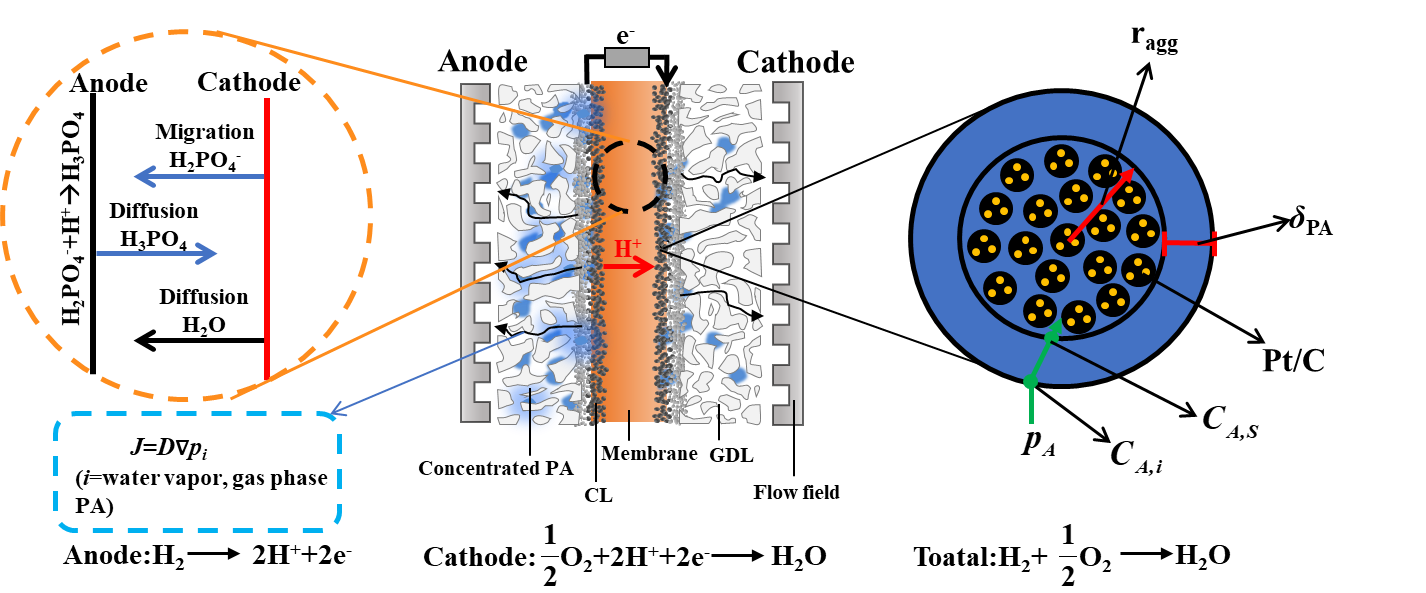Predicting Distribution of Phosphoric Acid and Water in High-temperature Polymer Electrolyte Membrane Fuel Cell
High-temperature polymer electrolyte membrane fuel cell (HT-PEMFC) can be applied in electric vehicles and marine power supplies.
However, the electrolyte in the HT-PEMFC is concentrated phosphoric acid, which electro-migrates from the cathode to the anode during fuel cell operation, leading to phosphoric acid redistribution and thereby affecting the multiphase mass transfer and electrochemical reaction inside the fuel cell.
Recently, a research group led by Prof. SUN Gongquan and Prof. WANG Suli from the Dalian Institute of Chemical Physics (DICP) of the Chinese Academy of Sciences (CAS) developed a novel multicomponent multiphase model to predict the distribution of phosphoric acid and water in HT-PEMFC, which can help to better understand the effects of materials, structures, and operating conditions on the multiphase transport of water and phosphoric acid.
This study was published in AIChE Journal on April 9.

Schematic of the cathode catalyst layer based on the agglomerate assumption (Image by SUN Mu)
The researchers explored the transport mechanism of water and phosphoric acid inside the HT-PEMFC and its impact on fuel cell performance by constructing a three-dimensional, non-isothermal, multiphase HT-PEMFC model based on a catalytic layer spherical agglomerate sub-model.
This model could predict the performance of the fuel cell. It included multicomponent multiphase transport of phosphoric acid and water model, and the energy transport model.
The simulation results showed that the phosphoric acid concentration in the anode was higher than that in the cathode, and about 20% of the water generated from the cathode diffuses to the anode in the form of the liquid phase.
"This study provides a theoretical basis for the optimization of the design of materials, structure, and operating conditions," said Prof. SUN.
The above work was supported by DICP, the National Natural Science Foundation of China, and CAS. (Text by SUN Mu)